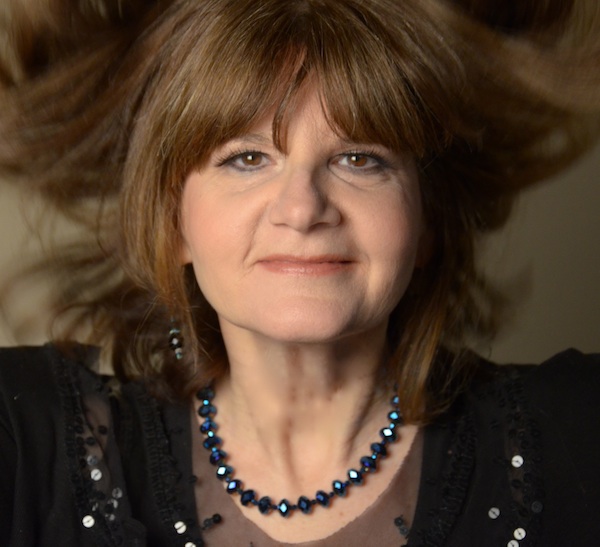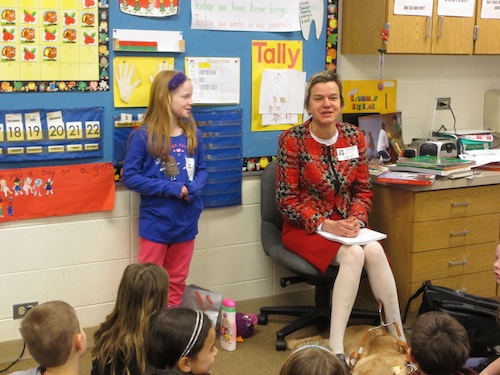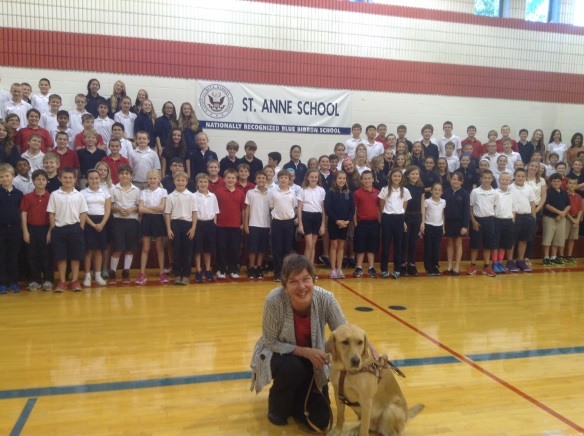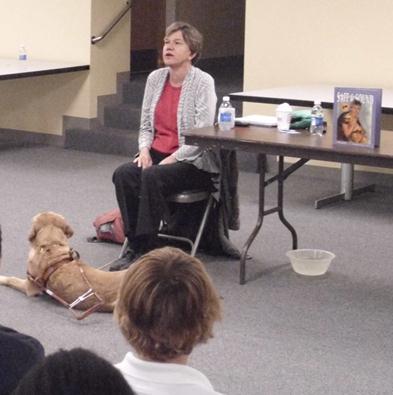Read all about it! Blind blogger interviews video producer!
October 21, 2013 • 17 Comments • Posted in Uncategorized, writingMy book club pick was a flop. Maybe because everyone else read it in print, and I got to hear Academy Award winner Rita Moreno read the audio version? When all was said and done, the only member who liked Sonia Sotomayor’s My Beloved World as much as I did was Jamie Ceaser.
Always knew that Jamie woman had good taste.
When Jamie isn’t reading fascinating books like My Beloved World, she’s busy putting videos and films together. She’s been producing shows for Chicago’s public TV station WTTW for years, and one of her latest productions debuts nationally tonight. Local, USA is a weekly 30-minute compilation of stories produced by independent producers, content creators, and public television stations across the country. Jamie and her co-producer Eddie Griffin have already put 13 Local, USA episodes together, each one exploring a particular theme. It’s a busy time for Jamie, but she was kind enough to answer a few questions about Local, USA for my blog readers.
- Me: How’d you get involved in Local, USA?
- Jamie: V.J. McAleer — He’s Senior Vice President of Production at WTTW — got approached by WGBH in Boston about working with them on a new show. VJ is my boss, and my biggest advocate, too. He called when I was in Florida on a Tuesday and said we’d need a proposal by Friday. So I tanned and wrote.
- Me: Are you doing it all by yourself?
- Jamie: I’m co-producing it with Ed Griffin. Maggie Ness is associate producer.
- You drive me to book club sometimes, and I always love hearing about your work during those drives. You’ve produced programs on everyone from Abraham Lincoln’s wife Mary Todd to baseball icon Bill Veeck. What makes this project different from other ones you’ve produced?
- Jamie: Well, To be honest, this project does bring back memories of something I’ve done before: my first show at WTTW. That was Image Union, also a show for independent producers. But it was way back–way before youtube and iPhones and Quicktime and even DVDs.
- Me: How were things different then?
- Jamie: Films would come on 16 mm reels or videos in VHS cases. Local, USA may end up being a similar show, but the technology has changed so much. Now people send weblinks to screen their films and videos., And i can screen all of the shows I’ve produced so far — on my iPhone!
- Me: What do producers do?
- Jamie: Production can mean a lot of different things – it all depends on the type of show you’re working on, and the studio where you’re working. Show development, researching, interviewing people, shooting, editing, or even gentle coercion — production includes whatever you need to do to get the project completed.
- Me: So what did you have to do to get this one completed?
- Jamie: For this program, basically, we’re screening videos, logging them and cataloging them by theme and seeing what works together organically. After that we script the show and videotape the hosts on location.
- Me: Who are the hosts?
- Jamie: Niccole Thurman, a performer from Second City, and Evan Allen-Gessesse, an independent producer.
- Me: How long did it take to put these episodes together?
- Jamie: It was a lightning-fast season — we started in March and finished 13 shows by the end of June. That’s a pretty quick production schedule.
- Me: What can viewers look forward to on the first episode this week?
- Jamie: The first show has four stories about times gone by.
- Me: Any favorites?
- Jamie: My favorite one is produced by a teenager. It’s about his grandfather with Alzheimer’s Disease. He intercuts old family films to link his father’s early memories with his grandfather, and those memories aren’t available to his grandfather any more. It’s very poignant and sweet.
Jamie says the first season (13 shows) focuses on human interest stories and art pieces. “The shows we’re working on right now are more social justice-oriented.” Local, USA debuts on The World Channel tonight, October 21, at 9:00 p.m. Central Time and will continue to air on Monday nights after that, at 9:00 p.m. Eastern Time. Blog readers who live in the Chicago area can also tune in to WTTW Channel 11 to catch it on Thursday nights at 11:00 p.m.





